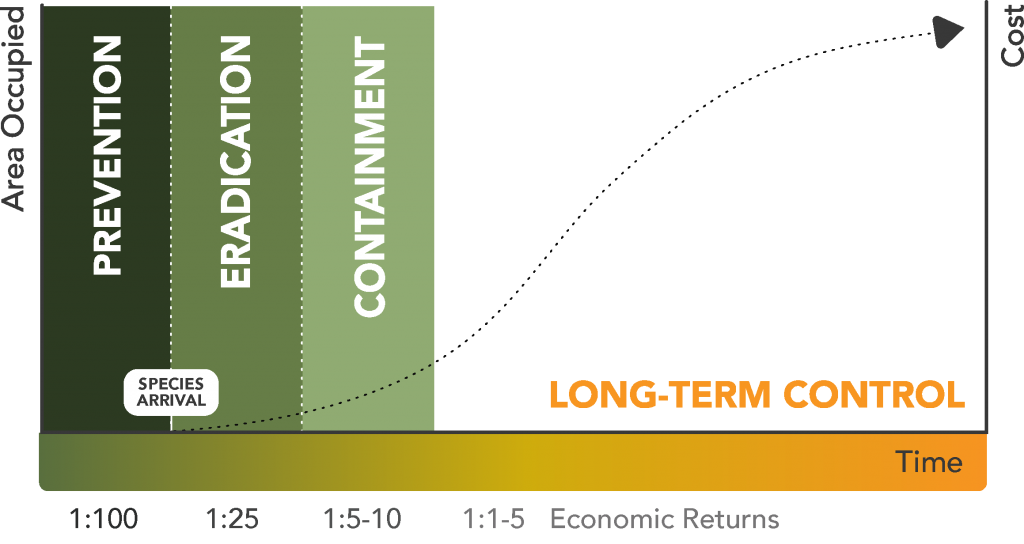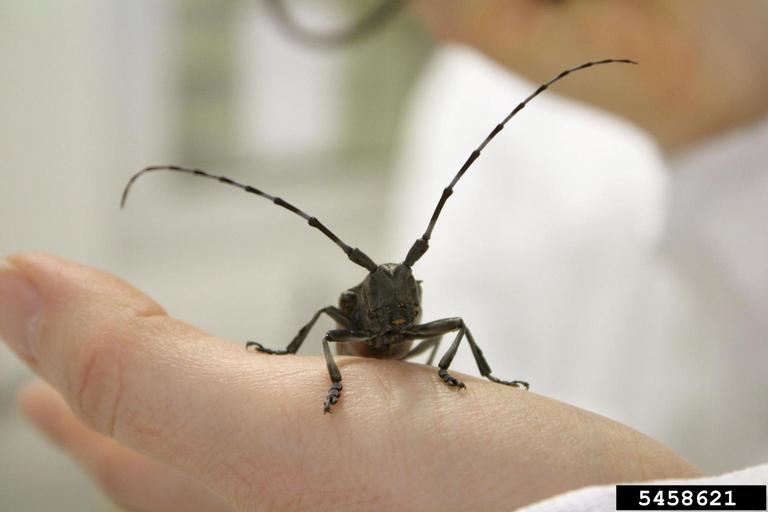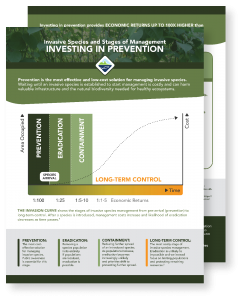Invasive species and stages of management
Prevention is the most effective and low-cost solution for managing invasive species. Waiting until an invasive species is established to start management is costly and can harm valuable infrastructure and the natural biodiversity needed for healthy ecosystems.

Invasive Plants and Animals from the Government of Victoria
The invasion curve shows the stages of invasive species management from pre-arrival (prevention) to long-term control. After a species is introduced, management costs increase and likelihood of eradication decreases as time passes.
- Prevention: The most cost-effective solution for managing invasive species. Public awareness is essential for this stage.
- Eradication: Removing a species population in its entirety. If populations are localized, eradication is possible.
- Containment: Reducing further spread of an introduced species. As populations increase, eradication becomes increasingly unlikely and priorities shift to preventing further spread.
- Long-term control: The most costly stage of invasive species management. Eradication is unlikely to impossible and we instead focus on limiting populations and protecting remaining resources.
Investing in prevention provides economic returns up to 100x higher than trying to manage a species after it arrives.
Case study: Asian longhorned beetle
As of 2014, Canada has spent an estimated $35.5 million preventing the arrival of Asian longhorned beetle, an invasive pest that attacks hardwood trees, including maple trees. As of 2017, Canada’s maple industry is worth $494 million.
Investing in prevention protects against the loss of this industry and, in turn, our economy, environment, and cultural identity.

What can we do?
- Stay up-to-date on potential incoming threats.
- Plant a diverse tree canopy to increase ecosystem resilience.
- Conduct a tree inventory to assess resources at risk.
- Survey existing invasive species within their current geographic range.
- Create a volunteer program to encourage reporting and promote invasive species management.
- Take actions to prevent the spread: don’t move firewood; clean, drain, and dry watercraft; and wipe mud and debris off of outdoor gear.
Resources

Further Reading
Biosecurity Council of WA – Invasion Curve Animation (YouTube)
